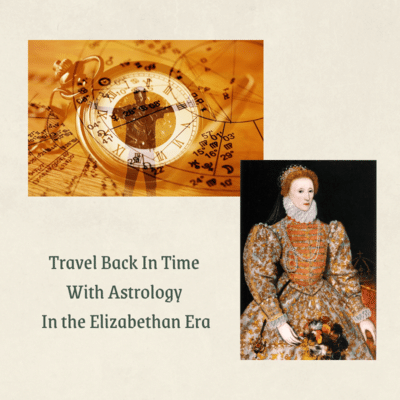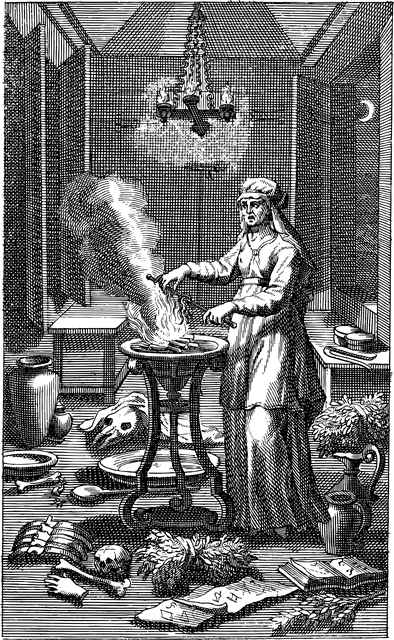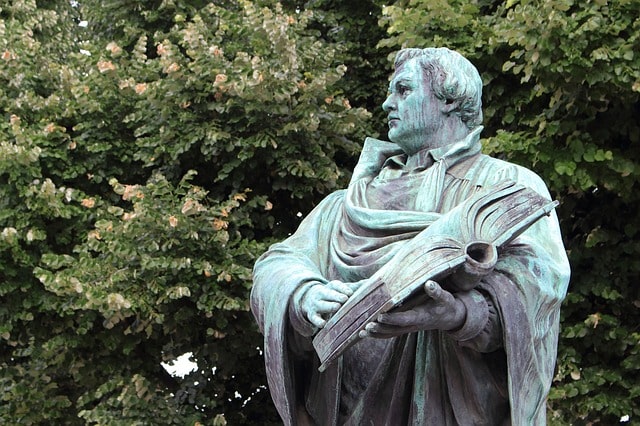
Have you ever wondered what was Astrology in the Elizabethan era like? This refers to the reign of Queen Elizabeth I, the British monarch from 1558 up to 1601. It was the time of the English Renaissance and also the transitional period in between the late middle ages up to the early modern era. This is when expansion, exploration, discoveries, and voyages flourished. It was also in this era that poetry, literature, music, and knowledge blossomed.
In this post we will dig into the very interesting Elizabethan astrology and have a deeper understanding of the following:
- How did astrology during the Elizabethan era begin?
- How wide is the disparity between Elizabethan era astrology to today’s modern astrology?
- What are the astrology beliefs in Elizabethan era?
- How strange was astrology in Elizabethan times?
- Was Elizabethan fate and astrology a tad gruesome as it is rumored to be?
So let’s go ahead find out if some Elizabethan beliefs ring true to this day and age.
Elizabethan Astrology: An Overview
First thing you should know about the Elizabethan Astrology is that these people believed so much in the supernatural. Magic, and the stars had a great influence in their lives. Much of their lives and daily routines were highly dependent on the skies. Unlike today where the stars where the big-city lights dim them out, there was no electricity, desk lamps, or street lights. So that when the people looked up all they saw was mesmerizing beauty.
Travels only happened during the day. Studying was possible only by the illuminating candle. And plays were possible only when there was daylight. By consulting the stars, the Elizabethans could understand their world much better. This is how they determine the course of action they need to take in their daily life.
Astrology In the Elizabethan Era: A Walk Down Memory Lane
Here is the interesting true story behind Astrology in the Elizabethan era. Around the 1600s in England, there were two astrologers named Simon Forman and Richard Napier. They were responsible for producing some of the largest surviving sets of historical medical records. These casebooks had in them a vast range of issues. From being lovesick to being pregnant, and being bewitched, even. The University of Cambridge scholars dedicated ten years to transforming 80,000 cases into a unique digital archive.
Astrology in the Elizabethan era was the decade when Queen Elizabeth was coming to the end of her reign. Shakespeare’s era, and also the era when the plague was ravishing the London population. So, what did you do if you fell ill? You have a few choices. One, you could consult a physician if you had enough money to spare. Or a surgeon if you had skin lesions or a broken bone.
Then, there are those who choose to consult the irregular practitioners. People who were not given licenses to treat patients by the College of Physicians or Universities. Among these people were the astrologer physicians.
Could you be pregnant? What is your disease? Why can’t you fall asleep? How come the rash on your elbow will not vanish? There are all sorts of questions recorded about what people asked these astrologer physicians. What they used was their knowledge about the motion of the stars. In this world everything is interconnected. Just as everyone fully accepts the moon does affect the tides, so do the stars affect everything there is on earth.
A Complicated System
However, the system of Astrology in the Elizabethan era was very much complicated. All the astrologer could do was judge the stellar motions, the planetary effects on your body. He used the phrase ‘judgment’ to say what was going to happen. Whether you will or will not get well. As well as the possible measures to help you heal.
There are 65,000 people represented in the casebooks. But the people who were able to give the most information are the ones that wrote about them. The astrologer physicians Simon Forman, and Richard Napier.
The type of astrology that Forman and Napier were conducting was horary astrology. You base it on the moment the person asks the question. Or the moment the message arrives at the astrologer. He would ask you your name, age, civil status, and probably your address as well.
Remedies Used With Astrology In the Elizabethan Era
This is what happens next. The astrologer would take the specific moment wherein you asked the question. Next, he would map out the stars of the positions of the planets during this time. He would create this 12 section chart. Then come up with the decision that this was the indicator of the nature of your ailment in a particular way. He may also jot down a particular treatment- most of which are purges. Some are gentle, and some, not so.
However, there are also remedies of other sorts. Like putting dead pigeons upon one’s feet. The way this ‘medicine’ worked was by rebalancing the body in one way or another. So you have pigeon slippers, amulets, even bloodletting. Lots of potions of different sorts. These remedies were both weird and wonderful across this period. But basically, it’s either working in order to rebalance the disruption within the humourous core. Or rebalancing the stellar powers in the specific part of the patient’s body.
The Alleged Witchcraft

One of the most challenging things within the casebooks were the cases of alleged witchcraft. People would go to the astrologer and tell them that they might be bewitched. It may be because they have an illness that won’t go away with regular remedies or with the passage of time.
Part of the astrologer physician’s job was to figure out what was really causing the illness. These guys were “cause specialists”. Although there are really times when they assess that there is a foul situation that may be due to witchcraft. For example, she looked at me funny with those evil eyes. But more often than not it’s really just a natural cause that is not responding to the common remedies.
We could therefore conclude that these casebooks were full of all the grubby world of early modern medicine and occult. Everyone, starting from Shakespeare’s landlady up to Canterbury’s archbishop. But perhaps the most remarkable thing about these records is the documentation of the hopes and worries in the daily lives of the common folk. Regardless if it’s about their health and illness, or their fertility spanning four decades in 17th century England. This is a world that is very strange yet very familiar to us. A terrain in which historians work best.
Overview of Beliefs
There were many forms of beliefs and superstitions with Astrology in the Elizabethan era. Let’s go through them one by one.
General Beliefs
Elizabethans viewed the world as a delicate place, with good and evil spirits. Believing that this balance far extended beyond the spiritual realm. They thought that the laws of nature had great similarities. And that changes which made things more appealing could make them more healthful as well.
This is the reason why during the plague, people burned scented firewood in the streets. Others carried fragrant flowers in their pockets in hopes of warding off the disease. This is where the children’s rhyme, ‘Ring around the rosy’ came about. It is during the times of plague, and the next line ‘pocket full of posies’ refers to the flowers. This belief is also referred to as sympathetic magic which the Elizabethans believed in a lot.
Medical Beliefs – The Heart, Brain, and Liver
According to the Elizabethans, the body’s three main organs were the heart, brain, and liver. The liver was there to create blood and produce the energy needed for the person’s survival. Then there’s the heart, which they believed was the center of life. It was also said that the heart sent vital spirits throughout your body, telling you what to do, and basically controlling your feelings. Finally, there was the brain which the person used for imagining, memorizing, and of course, reasoning. This was the person’s logical part and it used the spirits as its helpers.
The Four Humours
One common belief during this era revolved around the four humours. They were phlegm, blood, black bile, and yellow bile. This belief states that the humour most present in a person will determine their personality. But Elizabethans believed that too much of any of these could result to bad traits and disease.
Catholicism and Queen Elizabeth
Queen Elizabeth was surrounded by Catholics and Protestants her whole life. She had been dependent on her behavior to the Catholic religion during Queen Mary’s reign, who happened to be her half-sister. When Elizabeth succeeded the throne of England, she let Catholicism be and practiced tolerance towards them. But her level of tolerance decreased throughout the years. This was due to the numerous Catholic plots wanting to replace Queen Elizabeth with a monarch who is Catholic. They believed this would restore England to its religion of origin.
Protestant Christianity

England was famous for being a Protestant Christian country during Elizabeth’s reign. It was because her first act as Queen was to restore the official religion which was Protestant Christianity. This was part of the Reformation, the European movement. It began with the attacks on corruption within the Catholic Church. This led to the eventual founding of the Protestant churches.
Many wars happened for the sake of religion. Thus, the English Catholics were devious traitors to the nation. They were not allowed to hold any government position. However, some Puritans felt that the Church in England wasn’t doing enough to reject Catholicism. It was their mission to ‘purify the church from the remaining Catholic elements like the ceremonial robes, and the bishop.
Astronomical and Astrological Beliefs
Elizabethans believed that there exists seven planets. These were the Moon, Mercury, Venus, Sun, Mars, Jupiter, and Saturn. All of which rotated around Earth. They believed that Earth was the center of the universe. To them, the positions of these planets affected life here on Earth. The astrologers also thought they had the power to predict the future through their knowledge of the stars’ positions. Stars’ movements and comets and eclipses’ appearance were around caused the disaster.
Supernatural Healing
Again, medicine was not thought of as scientific during Elizabeth’s time. When someone has an ailment of some sort, it’s automatically treated by astrology or supernatural art. The planet’s astrological positions cause either benefits or threats to one’s health.
For example, Saturn was famous for making the duration of things much longer. They believed Mars caused Tertian fever. Which made Mars and Saturn a deadly combination. This is why they believed these two caused the plagues that ravished England.
Then there are supernatural arts. These were magic, sorcery, and demonology, and they were also thought to be the ones behind some of the medical concerns. Many illnesses were supposedly caused by spirits. Devils, demons, gods, etc. You counter them by using charms, prayers, and white magic. None of these made any difference but the people were not aware of this.
Shakespeare and Astrology
Shakespeare made more than a hundred references to Astrology in his theatrical plays. He mentions it in each of his plays and plays crucial roles in the actions, plots, and events. Some of his characters in these plots met their fate through the stars.
For instance, Prospero in ‘The Tempest’ defied the stars and later on used them to his advantage. While Anthony from ‘Julius Caesar’ blamed his defeat on the stars because they had forsaken him. Then he blamed the eclipse of the Moon for his fall.
The zodiac signs were also mentioned in several of Shakespeare’s plays. The planets also influenced the end of many other characters. This included Posthumus from ‘Cymbeline’. He was born under Jupiter, thus, he was going to have a happy ending.
